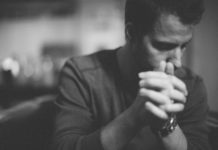Pastor Derwin Gray recently spoke at a gathering of the Church Planting Leadership Fellowship. It was great to have Derwin there to speak about his experience as a church planter.
In 2010, the former NFL safety launched Transformation Church in Charlotte, NC. Since that time, they have started two other campus, including one in a prison, and have been twice featured as one of the fastest-growing churches in America. I’ve written before how much I enjoy his writing. I believe that you will be hearing more from Derwin in the years to come, so I am glad to introduce him “early” to you.
While at the Exponential Conference, I sat down with Derwin at breakfast and did an interview. In this three-part interview, I asked Derwin about transitioning from a professional football player to a church planter, the hallmarks of Transformation Church, a viral video that made him famous and his new book, Limitless Life.
Today, we focus on his background and the beginning of his church-planting journey.
How did you come to Christ as an NFL player?
I didn’t grow up in the church, so for me football was my god. It defined who I was. When I got to the Indianapolis Colts in 1993, I had a teammate who would take a shower, dry off, wrap a towel around his waist, and ask my teammates every day after practice if they knew Jesus. Not growing up in the church, I thought it was pretty weird that a guy was half naked with a Bible asking other half naked dudes, “Do you know Jesus?”
I didn’t want anything to do with him. Eventually, however, he came to my locker and asked me that same question, which led to a five-year process of watching him embody the Gospel. Then on August 2, 1997, I understood what he said and realized what Christ had done for me. I have been in love with Jesus ever since.
Tell me about how you moved to planting a church?
I was perfectly content to be an itinerant evangelist. I felt that’s what God wanted me to do. But in a New Testament class at Southern Evangelical Seminary, we were going through Ephesians and 4:11-16 seized my heart. I recognized I had some of the gifts to lead a church. I didn’t really know about church planting, so the process took several years for it to unfold.
For our vision, we took the Great Commandment and Great Commission and we say it this way: we are a multi-ethnic multi-generational mission-shaped community that loves God completely, ourselves correctly, our neighbors compassionately.
So with that, we prayed a ton and launched Transformation Church on February 7, 2010. We had a core team of 178 and on our first weekend God blessed us with 701 in attendance. It’s absolutely crazy. We have continued to grow to around 2,300 now. We have a campus in Rock Hill, SC. We are in the process of a building campaign and we just launched an extension campus in a prison.
We may not fit in a church growth model. We don’t want to place an overemphasis on Sundays. What I like to say is, “Sunday is the huddle to equip us to play the game of life.”
Somehow, I knew it would come back to football. What is Transformation Church like?
The way I would describe it is, when you come, you sense authenticity. You sense passion and you feel loved. The vision is everywhere—when you walk in, it’s not only in words, but it’s in the embodiment of Transformation Church.
It’s multi-ethnic and multi-cultural, so you can walk in and see someone with dreads and piercings next to a lawyer, next to an NFL player, next to someone who came out of a trailer park, next to someone from Brazil.
It’s multi-generational as well. We want our church to look like a family, so we value people with gray hair. We value children. We don’t have a typical youth group because we believe that after sixth grade the students can serve in ministry and live on mission. We actually have three teenagers that are on full time staff in production and worship.
What does being multi-ethnic look like when your church gathers on a Sunday?
I would say we’re probably around 60 percent white, then 40 percent other, which would comprise primarily of African-Americans and Latinos. But it’s not just on the weekends. We infiltrate our vision through our teaching groups and small groups. We held off starting small groups for six months because they would have been primarily middle aged and white.
That wasn’t consistent with who God called us to be. So we prayed and strategized and now our small groups are more reflective of our vision. We feel like the church can be an alternative city within the city to say, “This is how you do relationships.” Barack Obama being the first multi-ethnic president is not what’s going to bring ethnic togetherness. It’s the Gospel.











